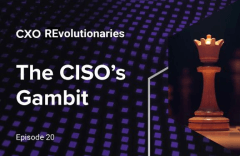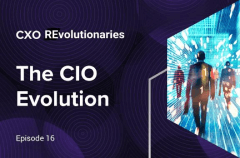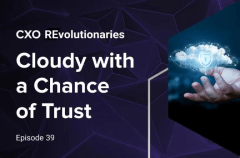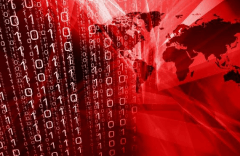|
|
|
|
|
|
|
World Cup lessons for cybersecurity
Christopher Jablonski, Director, CXO REvolutionaries & Community
The FIFA World Cup is lauded as a coming together of the world's population to celebrate sport, talent, and competition. The recent edition in Qatar was a welcome injection of positivity into the global consciousness. Focused, grand-scale effort has put humans in space, removed tyrants from power, and vaccinated populations.
Winning the cybersecurity war will no doubt take such unprecedented collaboration. And we see signs of it every day at all levels. The work the JCDC is leading to bridge the private and public sector efforts, “whole-of-state” approaches are bringing down silos, and collective defense strategies are set to expand. Cooperation between enterprises, governments, and solution providers will allow society to confidently accelerate digitalization globally.
A New Year’s resolution for CXO REvolutionaries is to help set the tone for this movement. In February, we’re bringing together IT and cyber leaders for the Global CISO Exchange in Miami, Florida. Industry experts, authors, and enterprise executives will come together for a couple of days of progress-making. Think of it as the opening match in the world cup for cyberdefense.
|
|
|
From the Office of the CISO:
My cybersecurity predictions for 2023
Marc Lueck, CISO - EMEA, Zscaler
As is the fashion in our industry this time of year, the winding down of 2022 has me considering what’s in store for the New Year. In light of trends I anticipate continuing, here are my top predictions for 2023:
 |
Cybersecurity will be asked to do more with less – Businesses will ask security leaders to slow down purchasing, drive efficiencies, and reduce spending while producing the same results. Security talent will remain hard to find, so removing administrative burdens and focusing on preventive security with integrated security platforms will be a priority.
|
 |
AI and machine learning will shorten reaction times – AI and ML-based solutions will enable quicker reaction times. A common rule states companies have one minute to detect a breach, 10 minutes to understand it, and one hour to contain it. AI will help shorten these times. Automated processes will not only provide visibility but also act, taking manual tasks off security providers.
|
 |
“The basics” will no longer hinder transformation – In the past, security professionals have striven to get the basics right – establishing policies, patch management, endpoint visibility, understanding of environments, and so on. This slows forward-looking initiatives. Under financial pressure, companies will realise they can address the basics with a cloud-based, zero trust approach.
|
 |
Visibility will be the number one priority – Transparency of organisations’ traffic will become a CISO’s priority. Without knowing what’s happening, security teams cannot act against intruders or prevent data loss. CISOs will begin to recognise how much this can impact career stability. Understanding problems, tooling, and helpful resources for visibility will be key as CISOs refuse to become ‘sacrificial lambs’ of inadequate security.
|
Whatever the New Year brings, here’s to hoping it’s a healthy and happy one for you and yours.
|
|
|
|
|
CXO REvolutionaries:
Podcast Center
Tune in to the latest voices from across our community of CIOs, CTOs, and CISOs for actionable advice and get inspired by some of the most passionate personalities in the industry.
|
|
 |
In the final episode of CISO’s Gambit for this year, host Sean Cordero is joined by colleagues Brad Moldenhauer, Marc Lueck, and Ben Corll, members of the office of the CISO at Zscaler, for a look back on 2022. They discuss the year’s cybersecurity happenings, the evolving role of security leadership, and what trends they anticipate continuing into 2023.
Listen now
|
 |
Dr. Ken Urquhart, global vice president of 5G at Zscaler, shares the latest developments for securing low-overhead, low-latency solutions at the network's edge, including how providers like AT&T and Intel are deploying zero trust in 5G applications. He covers consolidation cybersecurity, best-of-breed vs. platform security, government regulation, enforcement, and more.
Listen now
|
 |
Praveen Bhasin (Tata Consulting Services) and Sami Ramachandran (Zscaler) return for the second part of their M&A series, focusing on trends in the healthcare industry. Learn about notable transactions in the space, how value is extracted from speeding up integrations, and the ingredients needed that make deals successful today.
Listen now
|
|
|
|
Editor's Picks
 |
Despite being over a decade old, zero trust remains commonly misunderstood. In this video, Zscaler VP of Transformation Strategy and Field CTO, Sanjit Ganguli explains how the seven elements of zero trust architecture work together to verify, control, and enforce policy for any access request between an initiator and destination.
Watch the video to separate fact from hype
|
 |
Just like you keep up with the latest news, tools, and thought leadership in protecting and securing your organization from cybercriminals, your adversary is doing the same. They are connecting on forums, evaluating new software tools, talking with potential buyers, and searching for new ways to outsmart your security stack.
How cybercrime is being commoditized
|
 |
OpenAI's ChatGPT is turning heads on the internet. It grew to a million users in five days, and people are putting it to all sorts of uses, from writing sales emails to movie scripts. Like many fascinated by new tech, I wonder about the implications of AI.
A writer and former CTO opines on ChatGPT
|
 |
Enterprise architects shoulder the heavy burden of looking three, five, and even ten years forward to match business needs with technology capabilities. They’re expected to do this while taking into account external effects like complexity and performance. Only since the emergence of the cloud has security become a primary concern.
What we can learn from obsolete access methods
|
 |
Reaching the final phase of the software development lifecycle only to discover a significant security flaw is a waste of time, money, and effort. That’s why integrating security checks into the continuous integration, and continuous delivery/continuous deployment (CI/CD) pipeline has become a best practice for cloud deployments today.
Questions for evaluating your progress toward CI/CD
|
|
|
|
|
|
|
|